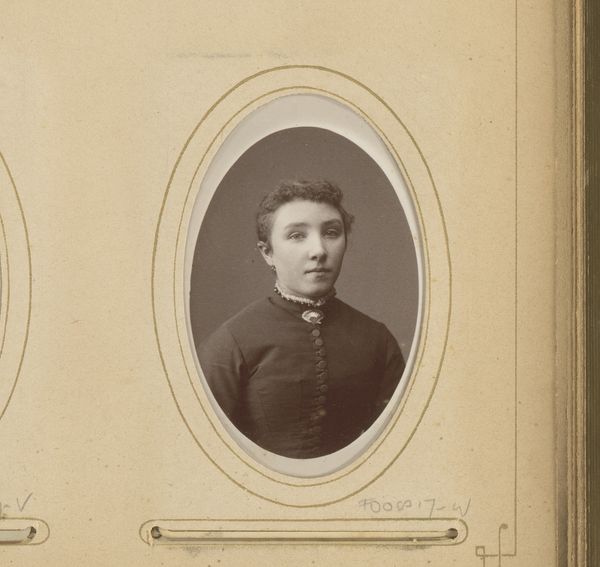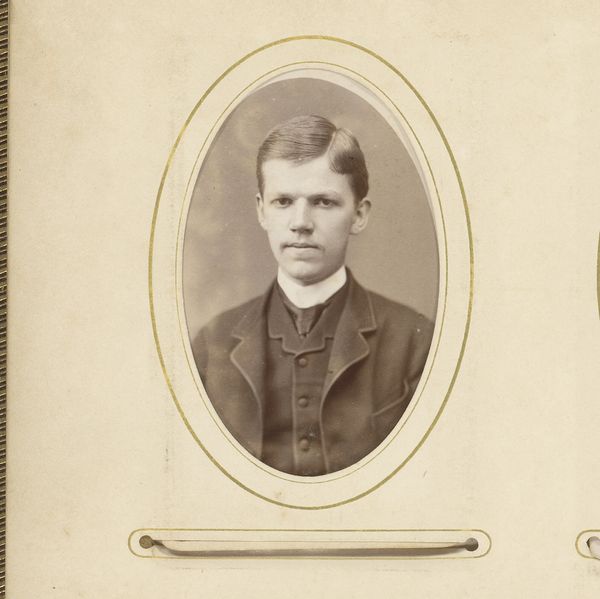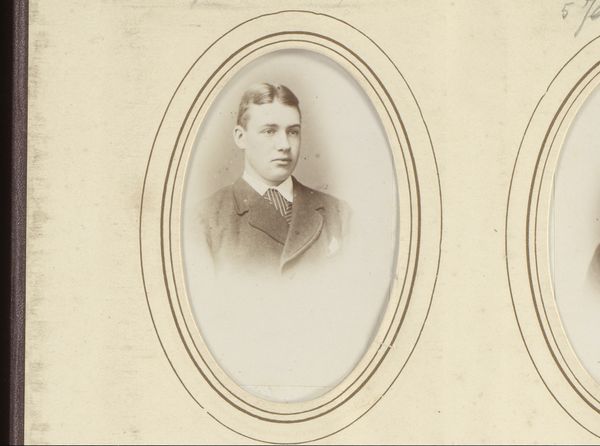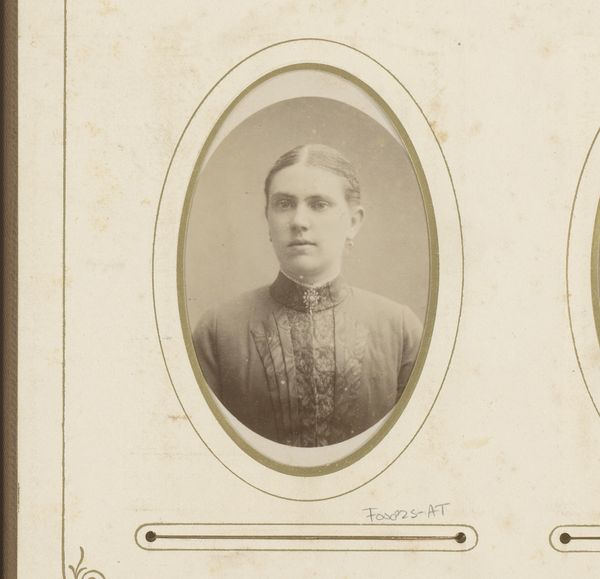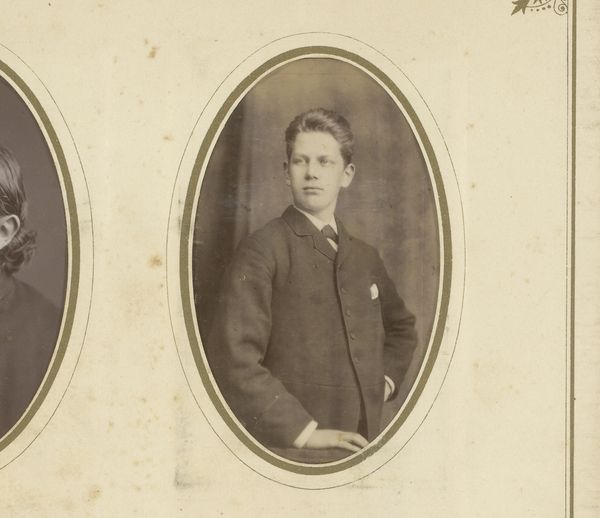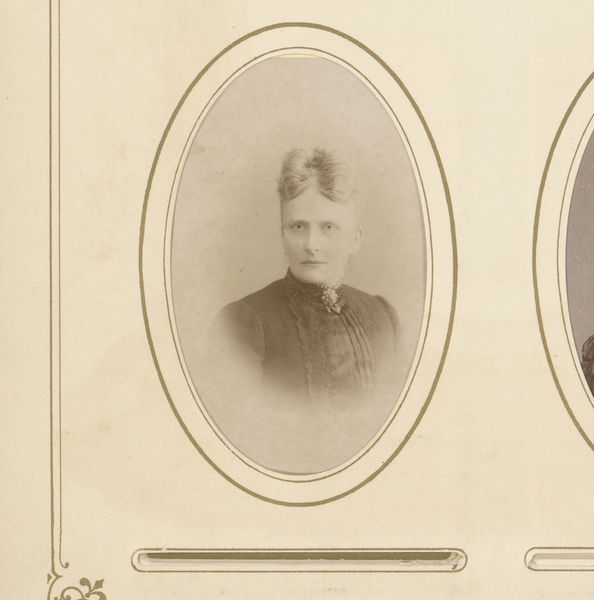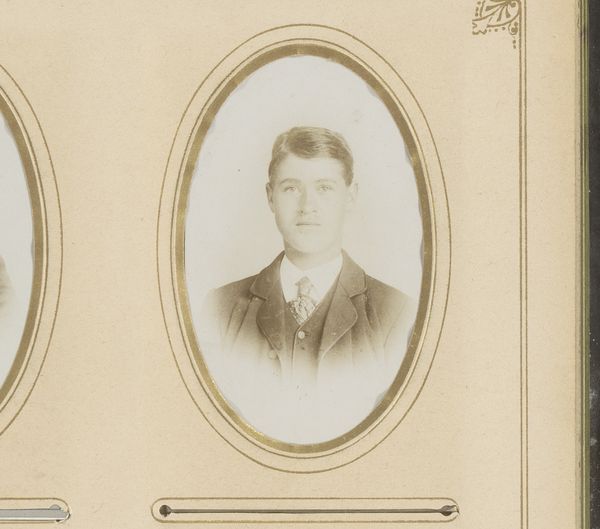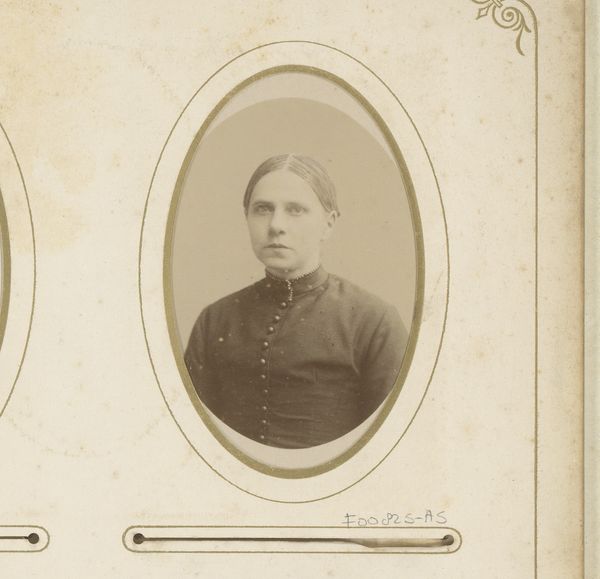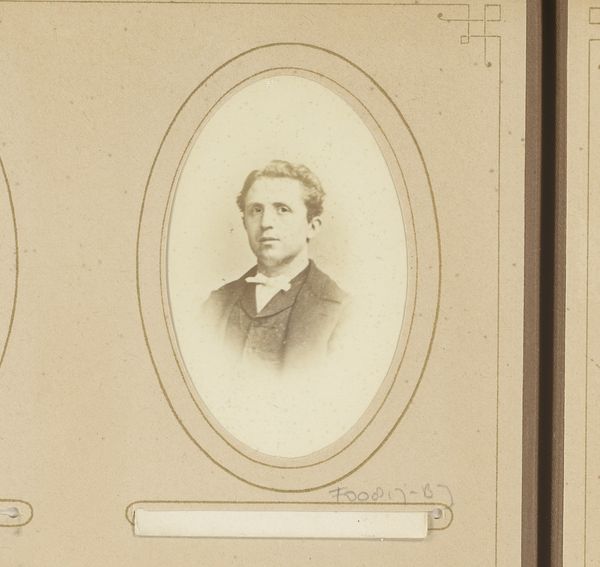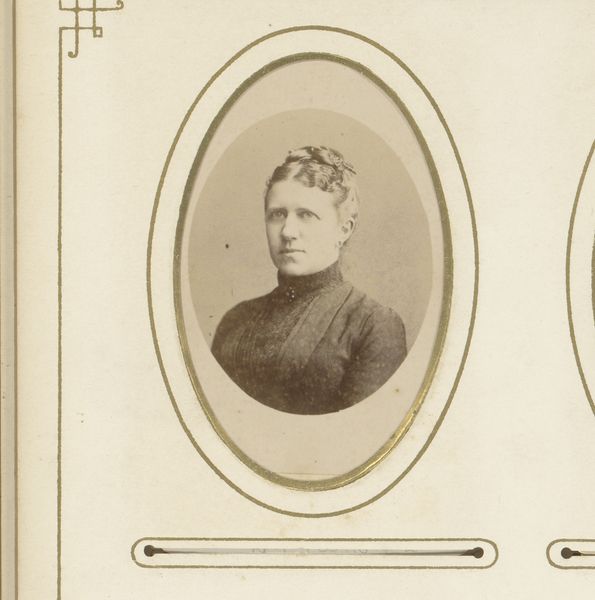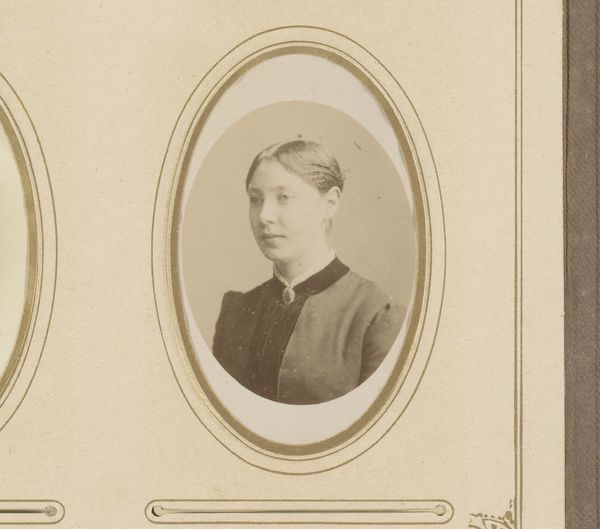
Dimensions: height 81 mm, width 52 mm
Copyright: Rijks Museum: Open Domain
Curator: Here we have "Portret van een man," or "Portrait of a Man," a striking photograph from between 1850 and 1900. Editor: My first thought is how constrained he seems within that oval frame. It gives the photograph a very formal, almost claustrophobic, air. Curator: Absolutely. And it's vital to acknowledge the conventions around portraiture at this time. This era saw photography’s rapid integration into a complex social and political landscape. Portraits weren’t just likenesses; they were assertions of status, identity, and often, gender roles within the patriarchy. The sitter is enacting his gender through attire. Editor: Yes, exactly, but the choice of the photographic process also raises questions. We are looking at something made through the manipulation of chemistry. He is rendered via material transformation, through very tangible work, as is the entire process of staging a sitting of this type, which would have involved significant amounts of labor and resources, like glass plates, emulsion chemistry, the studio... Curator: Precisely. Consider the access and class implications baked into portraiture, photography specifically. The expense alone limited who could afford to participate. This portrait captures the democratization of likeness, to an extent, as prior to this period painting was the only alternative and so a much higher investment. Yet that participation still rested upon deeply uneven foundations of privilege. Editor: So it's not just the *who* but the *how*—the labour, resources, and means of photographic production, including how all those things became accessible. The finished product hides much, in a way that an oil painting never could. Curator: Which returns us to this one man framed within history, materiality, and socio-political forces far bigger than him. A story of constraints and opportunities simultaneously presented. Editor: Looking again at how light defines him, it's like witnessing a bygone era and the tools that defined it, brought vividly back into our view.
Comments
No comments
Be the first to comment and join the conversation on the ultimate creative platform.
